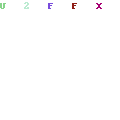




The Great Gatsby is known to be one of the greatest American novels written. And not only is it one of the greatest novels it has been made into a movie four times!
The first version of the novel was made in 1926 directed by Herbert Brenon. This film version was made into a silent film. Some of the actors in this film include Warner Baxter (Jay Gatsby), Lois Wilson (Daisy Buchanan), Neil Hamilton (Nick Carraway), George Hale (Myrtle Wilson), William Powell (George Wilson), and Hale Hamilton (Tom Buchanan).
The second version was made in 1949 directed by Elliott Nugent. This film version was never released onto television because of the making of The Great Gatsby 1974 version. The actors in this film are Alan Ladd (Jay Gatsby), Betty Field (Daisy Buchanan), MacDonald Carey (Nick Carraway), Ruth Hussey (Jordan Baker), and Barry Sullivan (Tom Buchanan).
The third film version was made in 1974 directed by Jack Clayton. In our opinion this version was the best out of all four of the versions because it related more to the text then the others. The actors in this film are Robert Redford (Jay Gatsby), Mia Farrow (Daisy Buchanan), Bruce Dern (Tom Buchanan), Karen Black (Myrtle Wilson), Scott Wilson (George Wilson), and Sam Waterson (Nick Carraway).
The fourth film version was made in 2000 directed by Robert Markowitz. This version in our opinion was ok but it being made in 2000 where technology was a bit more advanced we believed some parts could have been more realistic but on the other hand the characters fit each character perfectly. The actors include Tony Stephens (Jay Gatsby), Mira Sorvino (Daisy Buchanan), Paul Rudd (Nick Carraway), Martin Donovan (Tom Buchanan), and Francie Swift (Jordan Baker).
There even is rumor going around of another film version of The Great Gatsby said to come out in 2012 but we’ll just have to wait and see how that goes.
Sources:
"The Great Gatsby 1926: Movie and Film Review from Answers.com." Answers.com: Wiki Q&A Combined with Free Online Dictionary, Thesaurus, and Encyclopedias. Web. 07 June 2010.
"The Great Gatsby 1949: Movie and Film Review from Answers.com." Answers.com: Wiki Q&A Combined with Free Online Dictionary, Thesaurus, and Encyclopedias. Web. 07 June 2010.
"The Great Gatsby 1974: Movie and Film Review from Answers.com." Answers.com: Wiki Q&A Combined with Free Online Dictionary, Thesaurus, and Encyclopedias. Web. 06 June 2010.
"The Great Gatsby 2000: Movie and Film Review from Answers.com." Answers.com: Wiki Q&A Combined with Free Online Dictionary, Thesaurus, and Encyclopedias. Web. 07 June 2010.



















